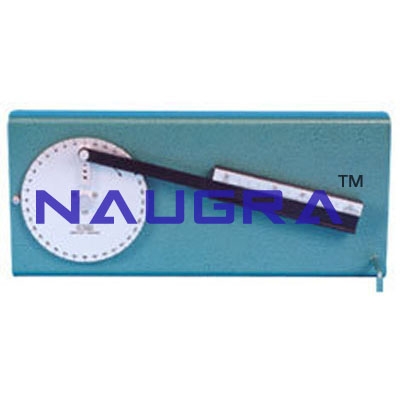Oscillating Cylinder Apparatus Engineering Lab Training Systems.
Features
Low cost, effective teaching.
Self-contained.
Bench mounted.
Measurement of crank angle and slider position.
Velocity and acceleration by graphical differentiation.
Crank mechanism with oscillatory slider.
Variable crank length.
Three year warranty.
Range of Experiments
To determine the relationship between crank angle and stroke.
To study the effect of changing the crank radius.
To
investigate by graphical differentiation the relationship between
angular and linear speeds and accelerations of the mechanism.
To construct velocity and acceleration diagrams for the mechanism.
Comparison of experimental results with theoretical predictions.
Description
The
apparatus shows the relationship between crank shaft rotation and
piston displacement, for an oscillating cylinder. The crank length is
adjustable. Crankshaft rotation is measured by a rotating protractor
scale and piston displacement is shown on a sliding scale.
The equipment may be mounted vertically for demonstration purposes, or flat on the bench for experimental use.
This
equipment is part of a range designed to both demonstrate and
experimentally confirm basic engineering principles. Great care has been
given to each item so as to provide wide experimental scope without
unduly complicating or compromising the design. Each piece of apparatus
is self-contained and compact. Setting up time is minimal, and all
measurements are made with the simplest possible instrumentation, so
that the student involvement is purely with the engineering principles
being taught. A complete instruction manual is provided describing the
apparatus, its application, experimental procedure and typical test
results.

